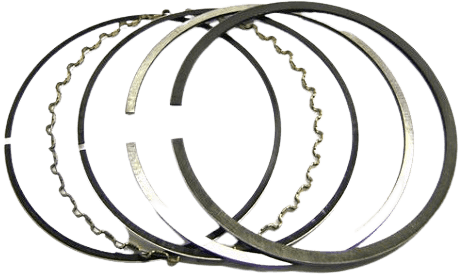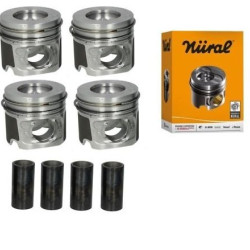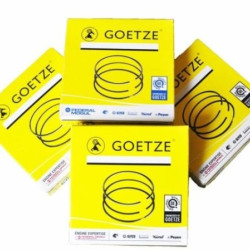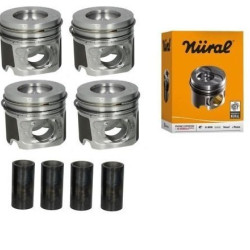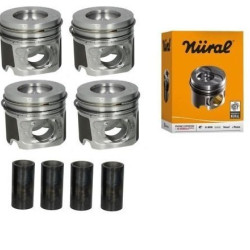BMW Ring
BMW Ring; It is the name given to the sealing element in vehicles that is shaped like a ring with a cut edge.
BMW Piston Ring: Features and Historical Development
Piston rings are one of the critical components of internal combustion engines. Piston rings sit around the piston, providing compression, preventing oil from entering the combustion chamber, and minimizing friction between the cylinder walls and the piston. In this article, we will examine what BMW piston rings are, their features, and their historical development.
Features of Piston Rings
BMW piston rings are designed to provide high performance and durability. Here are some key features of BMW piston rings:
High Strength: BMW piston rings are made from high-strength steel alloys. This ensures that the rings can withstand high temperatures and pressures for extended periods.
Low Friction: The surfaces of the rings are processed to provide low friction and wear. This increases engine efficiency and extends the lifespan of components.
Heat Resistance: BMW rings are designed to withstand high temperatures. This allows them to manage the heat generated during the combustion process and prevents deformation of the rings.
Oil Control: Oil rings control the oil between the piston and the cylinder wall. These rings prevent excess oil from entering the combustion chamber and ensure even distribution of oil on the cylinder wall.
Tight Tolerances: BMW piston rings are manufactured with precision to one-thousandth of a millimeter. This helps the rings fit perfectly within the engine and minimizes leakage.
Historical Development
The historical development of BMW piston rings has continuously undergone innovations and improvements alongside advancements in automotive engineering. Here are some key points regarding the historical development of piston rings:
Early Periods (1900s): The piston rings used in early engines were generally made of cast iron. These rings provided adequate performance at low RPM and power levels but faced durability issues under high temperatures and pressures.
Mid Period (1950s-1970s): During this period, the use of steel alloys became widespread. Lighter and more durable materials improved engine performance and efficiency. Additionally, significant improvements were made in ring designs.
Modern Period (1980s-Present): Today, BMW piston rings are produced using advanced engineering techniques and high-quality materials. Computer-aided design (CAD) and manufacturing (CAM) technologies allow for more precise and efficient production of rings. Furthermore, coating technologies and surface processing techniques provide low friction and high durability.
High-Performance Applications (2000s and Beyond): In modern high-performance BMW engines, piston rings have even more advanced features. Innovative materials and manufacturing techniques enable the rings to offer higher performance and durability.
Conclusion
BMW piston rings are critical components that ensure the efficient and durable operation of the engine. Historically, rings have continuously undergone innovations and improvements, which ensures that BMW engines deliver superior performance. Manufactured with high-quality materials and advanced production techniques, BMW piston rings ensure the smooth and long-lasting operation of the engine. The historical development of piston rings reflects advancements in automotive engineering, making each new generation of BMW engines more efficient and durable.
 Türkçe
Türkçe
 English
English
 Русский
Русский

